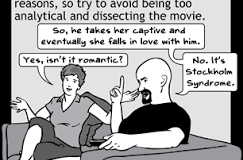Negative Thoughts- How to OVERCOME them!

We’ve talked a little bit about dangerous self-talk the last time we were here. If you didn’t read that article, be sure to check it out here!
Anyway, throughout the day, we have a billion thoughts. Some we act on. Others? Not so much… With several thoughts bombarding us at the same time, it’s hard to forget that there’s a huge difference between negative and positive thoughts.
So, negative thoughts. Yeah. We’ve all had them. Honestly, you can’t escape them. But, here are some ways that we can adopt to conquer our negative thinking:
Recognize cognitive distortions
Javeria sends a text message to her best friend who lives in another city to connect and ask what she is doing. However, after waiting for one whole day, her best friend does not reply to her text, which upsets her, “That’s it. I’m totally done with this friendship. She is a horrible friend. There’s no point in trying to connect with her anymore.”
What do you think of the above scenario? Sound familiar? Yeah. Guilty as charged! Javeria is actually portraying a cognitive distortion known as “black-and-white thinking”.
Awad and Sultan (2019) stated that black-and-white thinking originates from the early stages of development. Infants can only carry one good or one bad thought at a time.
As children grow under unavailable and inattentive caregivers, they will find it difficult to reconcile the two contradicting views. They will find themselves thinking (within their limited abilities) : My mother has left me. There is a time when she left and didn’t come back for a very long time, so she is most possibly not returning this time.
On the contrary, if the caregiver is available and consistent, the thought pattern of the child will be along the lines of : My mother still cares for me. There is a time when she is away but she will return soon. I know this because she always comes back and shows how much she cares about me.
Remember, your mind is so powerful that it can convince you something that isn’t necessarily accurate which can reinforce negative thinking. So, when you have self-awareness of having such thoughts, you can then challenge those thoughts. And that’s the true beauty of self-awareness.
Building distress tolerance
What is distress tolerance?
Everyone faces intense emotional roller coasters at a particular point of their lives. However, this emotional response to stress may occur so regularly that it feels so overwhelming and unmanageable. Yeah. Bring on the four ply tissues!! Therefore, distress tolerance is a person’s ability to manage their internal emotional state in response to stress-inducing factors, which includes negative thoughts. This requires the ability to take a step back, pausing for a few moments or a few days to ground yourself, and then take action. Keeping calm in the face of stress doesn’t signify nonchalance towards the problems or suppressing your feelings, however it allows you to feel in control of your emotion and behavior, instead of letting your emotions control you.
Now, there’s a question on everyone’s minds? How do you build distress tolerance? In between the stimulus (what is happening) and the response (how you act), you should pause as this permits you to regain control of your body and thoughts and later make decisions on how to move forward. People who struggle with black-and-white thinking may hastily end relationships or make hasty decisions that have disastrous effects on opportunities and achievements. You have the power to decide if you want to act in accordance with your temporary emotions and feelings or if you want to act based on healthy logic, your values, and what is in your long-term best interests.
Changing perception of the problem
“I am apprehensive to try applying for my college degree. My family’s economic situation is unstable. I am afraid I can’t afford to pay for the fees. This is such a huge problem. ”
Linda and Charlie Bloom, M.S.W. (2017) suggested that another great way to overcome negative thoughts is by reframing it and moving from a negative frame to a more hopeful one. One way of reframing is by redefining a problem as a challenge. Ask yourself, “Perhaps the problem is not as negative as I initially thought? Perhaps I am more in control over the problem?” Reframing the problem gives you power, because you are owning your problem instead of letting the problem owning you. Yeah. That’s my kind of relationship!!
For instance, in the above scenario, you can shift your perspective from viewing financial difficulty as a problem to seeing it as a challenge. You can try to apply for a scholarship, or any financial help from appropriate institutions, or perhaps you can work part-time while studying. After all, most positive changes in life begin as something tough. But, always remember: there’s light at the end of the tunnel. Even if you don’t see it.
Self-Comforting Coping skills
Think good thoughts!! I cannot stress this enough. I mean, yes, you’re allowed to cry and relieve your stress and anger but always try to think good thoughts as well!! You can unplug from negative thoughts by applying self-soothing coping skills. These skills are the first aid for stressful thoughts. Example of the skills are:
A. Affirmations: These are short and powerful words you tell yourself to assist you into having positive thoughts. Eg: I may not be in control of this situation, but I have control over myself and that is enough.
B. Deep breathing: Have you noticed that when you get upset, your breathing automatically becomes more rapid and shallow? This then signals your brain that you are upset and eventually your brain will send signals to the rest of your body that causes laboured breathing. Deep breathing will help counter this and make you feel more relaxed.
C. Replace thoughts with cognitive abilities: If you feel that your thoughts overwhelm you, try to put them aside for a little while and distract yourself with other cognitive-based abilities such as learning a new task, doing crossword puzzles or sudoku. Anything really helps!
D. Replace thoughts with grounding physical activities: According to a psychosomatic literature by Wong (2019), triggering thoughts that activate the fight or flight response can be reduced through positive physical touch and pressure. You can count your breath, bring attention to both your feet and notice how they feel on the ground, placing a hand on your heart, or touch something soft like your fuzzy blanket (Kalter & Merrill, 2021).
Release judgments
Have you noticed, that no matter how “successful” we are, no matter how happy we seem externally, all of us, sometime or another, may hold onto destructive self-judgments? We may find ourselves having brutal opinions about ourselves. We compare our lives to some ideal lives that we envision or to what other people are living. Yes, it is definitely hard to let go of such judgment, but with some practice, it is definitely possible. You will be more at peace with yourself (Ma, 2015).
Express your thoughts!
Some people may be so consumed with the negative thoughts that they tend to ruminate on them, which can cause negative effects on their daily life. Try to find a healthy way to express your thoughts, maybe you can write them down in a journal or find a close friend or loved ones to verbalize them out. If you are not too fond of writing, you can try out many different kinds of journaling such as visual journals (create sketches and draw in a journal), or you can record or dictate your thoughts to a phone recorder (Sarkis, 2020).
Final thoughts
Positive thinking which is based on realistic standards is undeniably powerful. We have the power to conquer our thoughts and transform them into something empowering. However, if you find that your negative thoughts are so severe that they start to interfere with your daily functioning, your work, or your relationships, don’t hesitate to seek help through counselling or therapy.
Currently, I am a student of Fatima Jinnah Women University. With a burning passion for psychology, words, and dreams, I decided to abandon medical studies for humanities. These days, when I’m not listening to ballads, watching movies, or sitting down with a good novel, I am rigorously studying Hangul (Korean language) to satisfy my obsession for BTS and K dramas. I’m a thinking introvert and INFJ personality. Therefore, I like ‘me time’. My articles typically resonate with psychological well-being advice.









